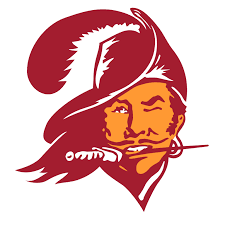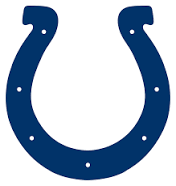Tampa Bay Buccaneers
- Paul Grange

- Sep 24
- 2 min read

When Tampa was awarded an NFL expansion franchise in 1976, the owners wanted a name that tied the team to the region’s swashbuckling past. They chose the Buccaneers, a nod to the pirates who prowled the Gulf of Mexico and Florida’s coasts in the 17th and 18th centuries. “Buccaneers” originally referred to hunters and raiders in the Caribbean who lived by seizing Spanish ships laden with treasure. Florida folklore is full of tales of hidden pirate gold, shipwrecks, and daring sea raids.
No legend is larger in Tampa than that of José Gaspar, better known as Gasparilla. According to local lore, Gaspar was a Spanish nobleman turned pirate in the late 1700s who terrorised the Gulf of Mexico, plundering ships and raiding Florida’s west coast. He was said to have hidden treasure near Charlotte Harbor and even threatened Tampa itself. The myth ends with drama: cornered by the U.S. Navy, Gaspar supposedly wrapped an anchor chain around his waist and leapt into the sea, vowing never to be captured alive.
Historians now agree that Gaspar probably never existed — his story first appeared in print in the early 1900s, likely invented by Tampa boosters to promote the city. But fact or fiction didn’t matter. Gaspar became Tampa’s pirate mascot, and in 1904 the city launched the first Gasparilla Festival. Each year, costumed pirates sail into Tampa Bay aboard the José Gasparilla, a mock pirate ship, and “invade” the city, followed by parades, beads, and days of revelry. When the NFL franchise was founded, choosing the Buccaneers was inevitable: the city already celebrated pirates as its civic identity. The Bucs’ logo, their skull-and-crossed-swords flag, and even the full-scale pirate ship in Raymond James Stadium and the cannons that fire after every score are all modern extensions of the Gasparilla tradition.
The franchise’s early history was rough. In their debut season in 1976, the Bucs went winless (0–14), and they lost their first 26 games across two seasons — still the longest losing streak in NFL history. But by 1979, coach John McKay and quarterback Doug Williams had led the team to the NFC Championship Game, salvaging some treasure from the shipwreck of their beginnings.

The golden era came in the late 1990s and early 2000s. With coach Tony Dungy building a dominant defense and Jon Gruden later at the helm, the Bucs fielded legends like Warren Sapp, Derrick Brooks, John Lynch, and Ronde Barber. In Super Bowl XXXVII (2003), their ferocious defense dismantled the Oakland Raiders, bringing Tampa Bay its first Lombardi Trophy.
The next chapter came with the arrival of Tom Brady in 2020. In his first season, Brady — alongside stars like Mike Evans and Rob Gronkowski — led the Bucs to Super Bowl LV, played in their own Raymond James Stadium. They beat Patrick Mahomes and the Chiefs, becoming the first team in NFL history to win a Super Bowl in their home stadium.
The Tampa Bay Buccaneers are Florida’s pirates: Parades, cannons and skulls. From 0–26 to two Super Bowls, from the legend of José Gaspar to Tom Brady’s triumph, the Bucs’ story is proof that sometimes it pays to be a pirate.







Comments